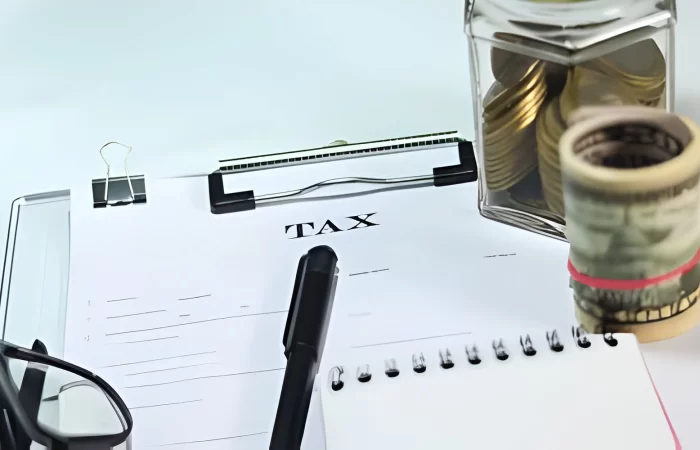
Rule 86B: Restrictions in Use of Amount Available in Electronic Credit Ledger
Introduction to Rule 86B
In the CGST Rules 2017, the central government has added a new rule termed Rule 86B to curb fake invoice transactions. This Rule imposes restrictions on the use of ITC (Input Tax Credit) to discharge liability towards output tax. It means that the taxpayer must pay 99% of their total liability through a cash ledger and 1% of their output tax liability (OTL) in cash.
Understanding the Rule with a Model
Let us know the GST rule 86B with the help of an example-
Suppose a businessperson sells goods valued at Rs 2 crore; the tax rate is 14 per cent. As per the rule notification, the person is liable to discharge up to 99 per cent of his total tax liability through the help of ITC and must pay Rs 28000 in cash.
Applicability of the Rule
One must note that Rule 86B is attached with a non-obstante clause. The clause implies that the Rule overrides all other GST laws from its enforcement date, i.e., 1 January 2021. Further, the regulation comes into force under the following conditions:
- This Rule applies to businesses with GST registration whose monthly goods have more than 50 lakhs in taxable value
- The taxable turnover will only comprise exempt and zero-rated supply.
- An individual should check the monthly value of their goods during GST return filing.
- The calculation for taxable turnover would be: Taxable Turnover= Total turnover of the person – (Zero rated + Exempted turnover)
Restrictions Imposed by the Rule
Below are the limitations imposed according to the Rule 86B notification:
- It restricts ITC or Input tax credits in the electronic credit ledger for releasing the OTL or Output tax liability.
- Only a registered person with a turnover of more than 50 lakhs per month can pay 99% of their OTL with their ITC.
- The remaining 1% of the output tax must be a cash payment.
Utilization of ITC before the GST Rule
Input tax credits are essential to the process of GST return filing and save businesspersons from the effect of cascading caused by taxation. The enterprise has used this credit, which is reserved in the electronic credit ledgers, to pay OTL. Companies in the past could use the ITC for the total cost of taxes. After the imposition of Rule 86B, the utilization of the ITC balance towards the amount of output tax liability has been limited, and this is necessary to remember while tax planning.
Exceptions to the Rule
The Rule 86B of CGST comes with certain exceptional conditions:
- Any individual from the ones mentioned below who have paid an annual income tax of more than at least one lakh rupees as stated under the IT Act of 1961 is exempted from following the Rule-
A registered individual:- Karta of HUF
- Managing director of the organization of the registered individual
- Whole-time directors or any two partners (in the case of the enterprise)
- Proprietor
- Member of managing committee or board of trustees
- If a registered individual acquired a refund of one lakh rupees or more in the previous financial year, then this refund of unused ITC received towards export under the letter of undertaking or because of an inverted tax structure will not be accounted for under the Rule.
- When a registered individual in inquiry has paid their OTL using the electronic cash ledger of an amount that is more than 1 per cent collectively of the entire OTL on the person in the given month in a given financial year.
- The individual is exempted from any tax if they hold any of the following offices –
- Government department
- Public Sector Undertaking
- Local authority
- Statutory body
Effect of Rule 86B on different types of Businesses
Rule 86B will have the following impact on businesses –
- This new Rule will not affect small-scale and micro enterprises as it has a limit of 50 lakhs, which applies only to large taxpayers.
- The law will decrease unethical business approaches, such as creating counterfeit invoices later used to create counterfeit input tax credits. They then use these fake ITCs to discharge their output tax liabilities.
- It will also restrain fraudsters from showcasing false high turnovers, leading to higher financial credibility.
- The restrictions in the Rule will also raise the compliance burden on the taxpayers.
The central government of India brought Rule 86B to reduce tax evasion and end fake invoicing. However, this scenario has introduced problems for the real taxpaying large-scale enterprises that have come under the ambit of this regulation. These organizations generally function as new members in the trading hub and usually run relatively low margins of profits due to their presence in multiple industrial practices. For a company to be taxed under this Rule, they require expert advice regarding GST return filing to know how much they need to pay in terms of tax and how many exemptions are in favor of their eligibility.
With Shah and Doshi as your qualified and trusted chartered accountants, you can work on your purpose without hassle. We believe in understanding your business goals across various activities through financial, compliance and management reporting. To know more about Rule 86B and GST return filing, get in touch with us
